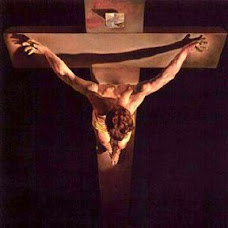Last week, as we reviewed how the
four Gospels grappled to explain the person and significance of Jesus, we read
John’s assertion that Jesus is co-eternal with God and that he was God (John
1:1). John then supplemented this briefest of explanations of Jesus’s identity
through Jesus’s own “I am…” statements:
- Bread: “I am the bread of life; he who comes to me shall not hunger.” John 6:35
- Light: “I am the light of the world. Whoever follows me will never walk in darkness, but will have the light of life.” John 8:12
- Gate: “I am the gate; whoever enters through me will be saved. They will come in and go out, and find pasture.” John 10:9
- Good Shepherd: “I am the good shepherd; the good shepherd lays down His life for His sheep.” John 10:11
- Resurrection and Life: “I am the resurrection and the life; he who believes in Me shall live even if he dies.” John 11:25
- Way, Truth, Life: “I am the way, and the truth, and the life; no one comes to the Father, but through Me.” John 14:6
- True vine: “I am the true vine, and my Father is the gardener.” John 15:1
Hot on the heels of such a
grandiose statement, John makes yet another astonishing assertion about Jesus:
Jesus is the light of the world. Light was and remains a common metaphor. The
contrast between light and darkness conveys a titanic positive/negative
contrast: Good and evil; Knowledge and Ignorance; Hope and Despair; Safety and
Danger; Confidence and Fear; and Life and death. In appealing to this common
metaphor, John conveys that our relationship with Jesus puts us into one
category or the other. We live in darkness until we believe in Jesus who brings
us into his light.
At the end of his gospel, John
explains that he wrote his book to convince people that Jesus is the Messiah,
the Son of God, and that by believing they may have life in his name (20:31).
We moderns may be struck by John’s efforts to explain this Jesus—this Jesus who
really was a man, yet is co-eternal with God and who is God, who formed the
worlds and called the very elements into existence and into perfect obedience,
who exists in heavenly transcendence but condescends to bend his knee to form
man from the clay of the earth and to breathe the breath of life into his body.
Yes, we moderns struggle to believe all this about Jesus, but those of us who
have believed, we have found Jesus to be our all in all. Truly, in him is life,
and that life is the light of all mankind (John 1:4).






